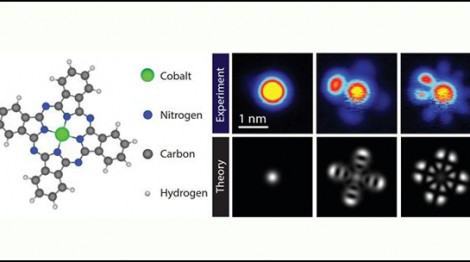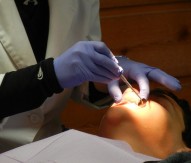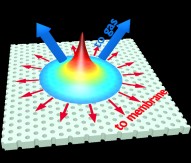
Scientists visualise interacting electrons in molecule
Researchers at Finland’s Aalto University and the Switzerland’s University of Zürich have succeeded in directly imaging how electrons interact within a single molecule.
The research team, part-funded by the European Research Council, demonstrated that measurements on the organic molecule cobalt phthalocyanine (CoPC) that can be explained only by taking into consideration how electrons in the molecule interact with each other. The investigations were led by Aalto University’s Atomic Scale Physics, led by Peter Liljeroth, which specialises on scanning tunnelling microscopy (STM) and utilises a tiny current between a sharp probe tip and a conducting sample to measure structural and electronic properties of the sample surface with atomic resolution.
The researchers used STM to measure the current passing through a single molecule on a surface by injecting or removing electrons at different energies. Within the molecule, electrons ‘live’ on so-called ‘orbitals’, which define their energy and the shape of their quantum mechanical wave function. These orbitals can be measured by recording the current through the molecule as a function of the applied voltage.
Fabian Schulz, a post-graduate researcher in the Atomic Scale Physics group, was surprised when the measurements on CoPC molecules did not fit the conventional interpretation of STM experiments on single molecules. A colleague from Aalto University and leader of the quantum many-body physics group, Ari Harju, suggested that the key to understanding the experimental results might be a form of electron-electron interaction that usually is neglected in interpreting such experiments.
In collaboration with colleagues from the University of Zürich, Harju and his team calculated the electronic properties of the molecule, including quantum mechanical effects that went beyond prevailing methods. This novel interpretation was confirmed when the Atomic Scale Physics group were able to match the experimentally measured molecular orbitals with the predictions of the theory.
Harju added that the discovery was “an important step forward in understanding how current is transported across individual molecules and molecular assemblies”.
The research is published in Nature Physics.




